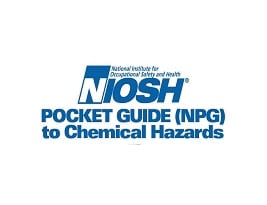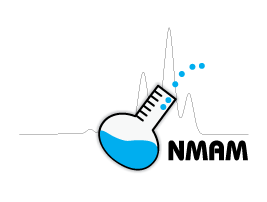Sulfur Dioxide

Overview
CAS No. 7446-09-5
Sulfur dioxide (SO₂) is a colorless gas with a characteristic, irritating, pungent odor. Exposure to sulfur dioxide may cause irritation to the eyes, nose, and throat. Symptoms include: nasal mucus, choking, cough, and reflex bronchi constriction, and when liquid: frostbite Workers may be harmed from exposure to sulfur dioxide. The level of exposure depends upon the dose, duration, and work being done.
Sulfur dioxide is used in many industries. It’s used to manufacture sulfuric acid, paper, and food preservatives. Some examples of workers at risk of being exposed to sulfur dioxide include the following:
- Factory workers in industries where it occurs as a by-product, such as copper smelting or power plants
- Industry workers that manufacture sulfuric acid
- Workers in plants that produce paper
- Food processing to preserve foods, such as dry fruits
- Workers who manufacture fertilizers
NIOSH recommends that employers use Hierarchy of Controls to prevent injuries. If you work in an industry that uses sulfur dioxide, please read chemical labels and the accompanying Safety Data Sheets for hazard information. Visit NIOSH’s page on Managing Chemical Safety in the Workplace to learn more about controlling chemical workplace exposures.
The following resources provide information about occupational exposure to sulfur dioxide. Useful search terms for sulfur dioxide include “sulfur oxide,” “sulfurous acid”, “anhydride,” and “sulfurous oxide.”
NIOSH Chemical Resources
Related NIOSH Resources
- NIOSHTIC-2 search results on sulfur dioxide—NIOSHTIC-2 is a searchable database of worker safety and health publications, documents, grant reports, and journal articles supported in whole or in part by NIOSH.
- NIOSH Worker Health Study Summaries—NIOSH conducts research to prevent illnesses and injuries in the workplace. The NIOSH Worker Notification Program notifies workers and other stakeholders about the findings of these research studies.
Selected Publications
- Immediately Dangerous to Life or Health (IDLH) Value Profile: sulfur dioxide—NIOSH reviews relevant scientific data and researches methods for developing IDLH values.
- NIOSH Criteria Documents: Criteria for a Recommended Standard: Occupational Exposure to Sulfur Dioxide—DHHS (NIOSH) Publication No. 74-111 (1974). Presents a standard to prevent the adverse effects of exposure to Sulfur dioxide over a working lifetime.
- Occupational Safety and Health Guideline for Sulfur Dioxide —This guideline helps stakeholders conduct effective occupational safety and health programs.
Related Resources
- ATSDR Medical Management Guidelines: Sulfur Dioxide
- ATSDR – ToxFAQs: Sulfur Dioxide
- ATSDR Toxicological Profile for Sulfur Dioxide
- EPA Acute Exposure Guideline Levels: Sulfur Dioxide
- EPA Air Trends: Sulfur Dioxide
- EPA Chemistry Dashboard
- NLM Hazardous Substance Data Bank: Sulfur Dioxide
- NLM Haz-Map: Sulfur Dioxide
- OSHA Chemical Sampling Information: Sulfur Dioxide
- OSHA Hazard Communication
- New Jersey Hazardous Substance Fact Sheets: Sulfur Dioxide
- Windows to the Universe: Sulfur Dioxide
-
International Resources
- ILO International Chemical Safety Cards: Sulfur Dioxide
- Canadian Centre for Occupational Health and Safety (CCOHS): Sulfur Dioxide
- European Chemicals Agency (ECHA): Sulfur DIoxide
- Gestis Substance Database
- IPCS INCHEM: Sulfur Dioxide
- OECD Global Portal to Information on Chemical Substances



